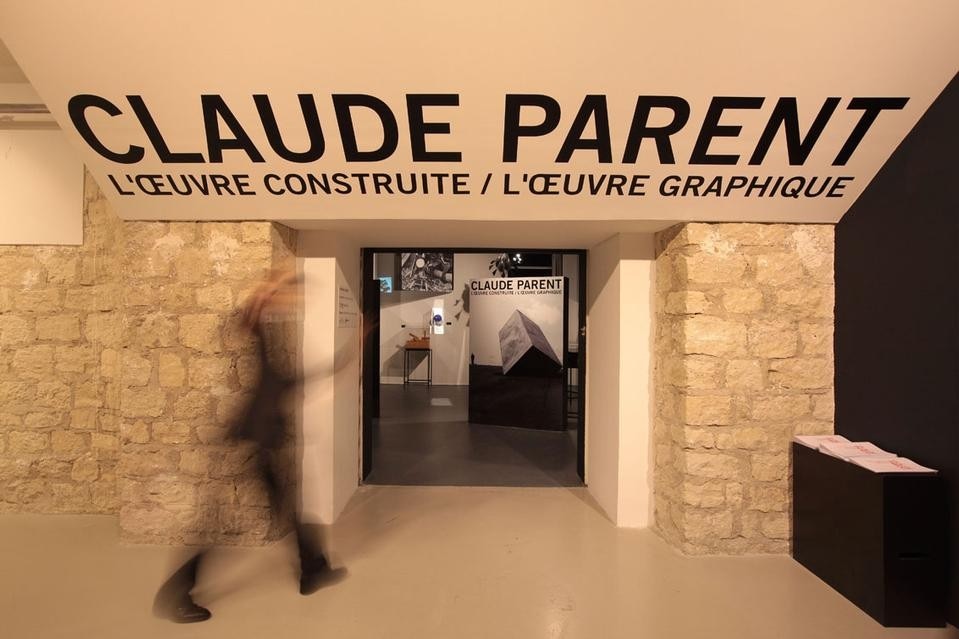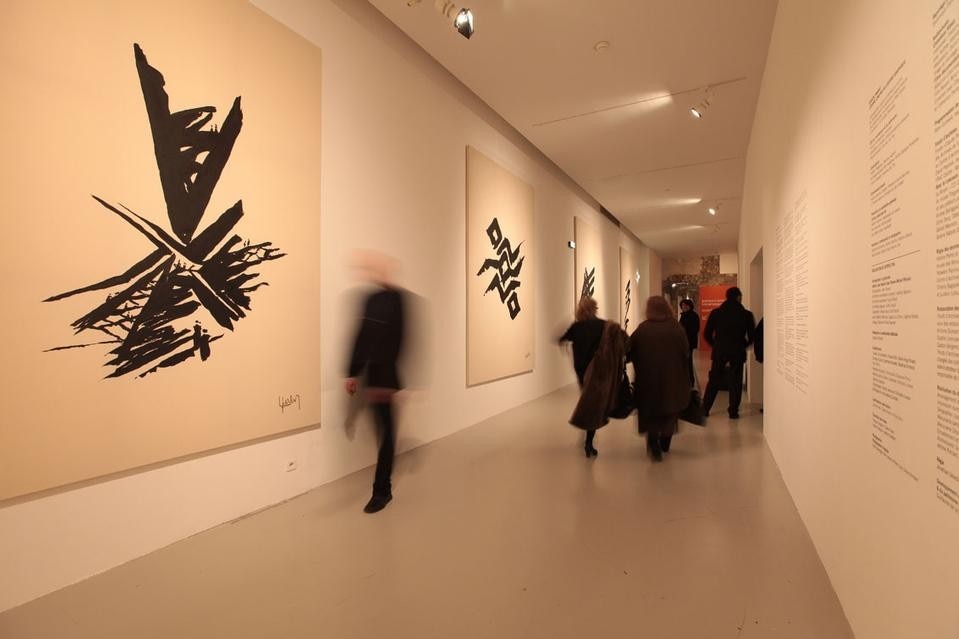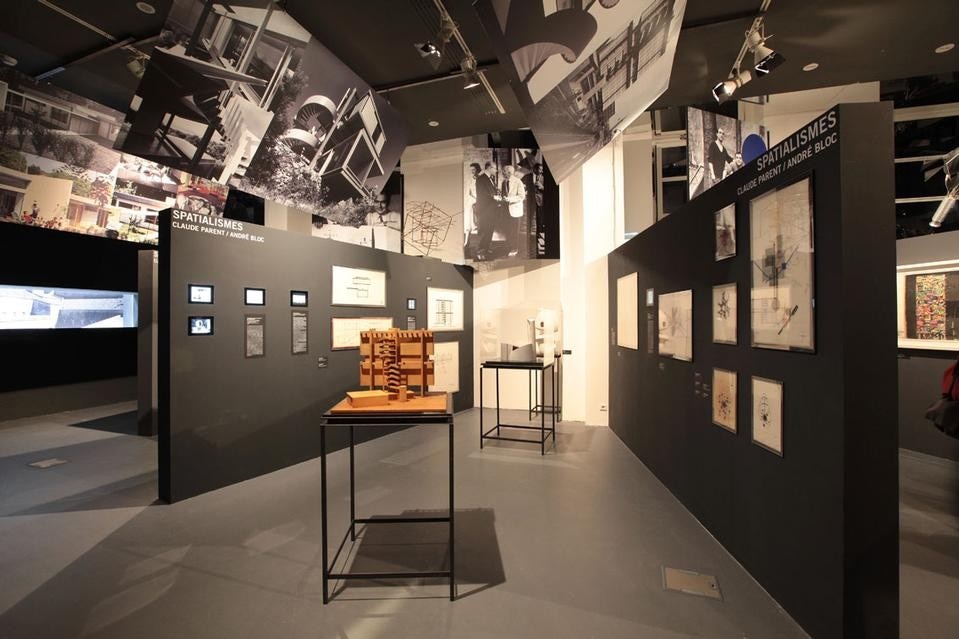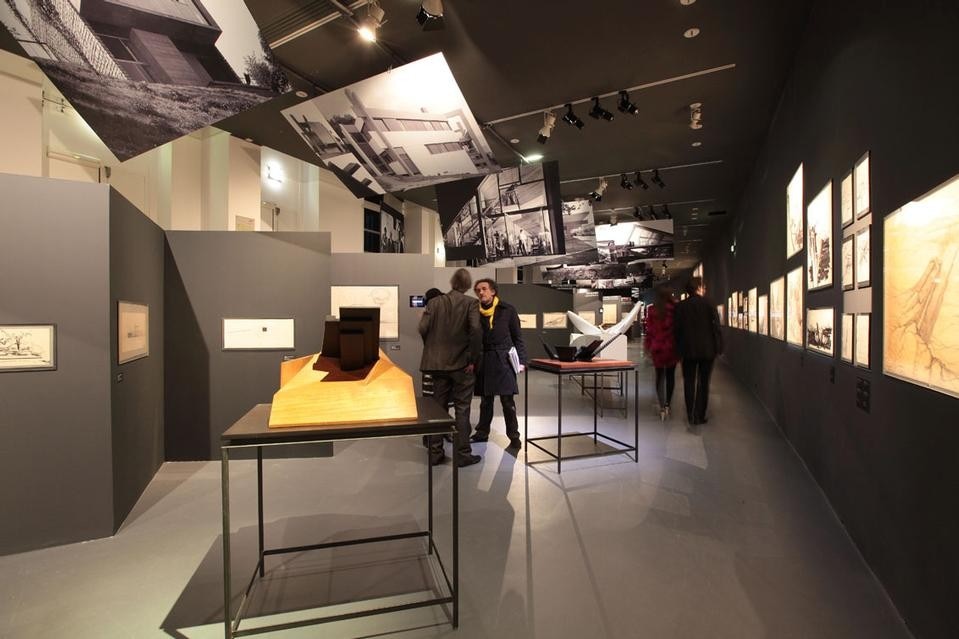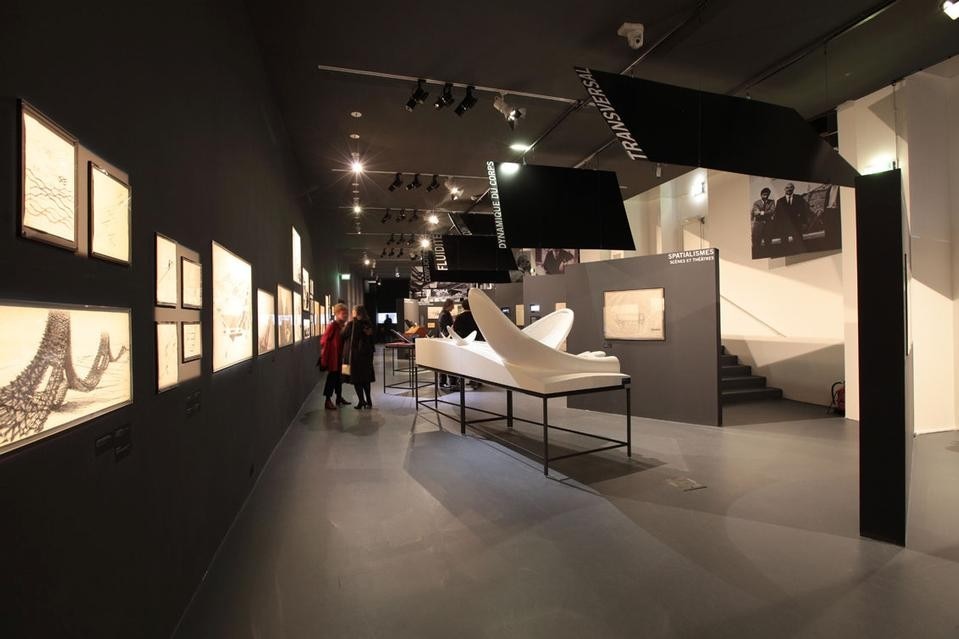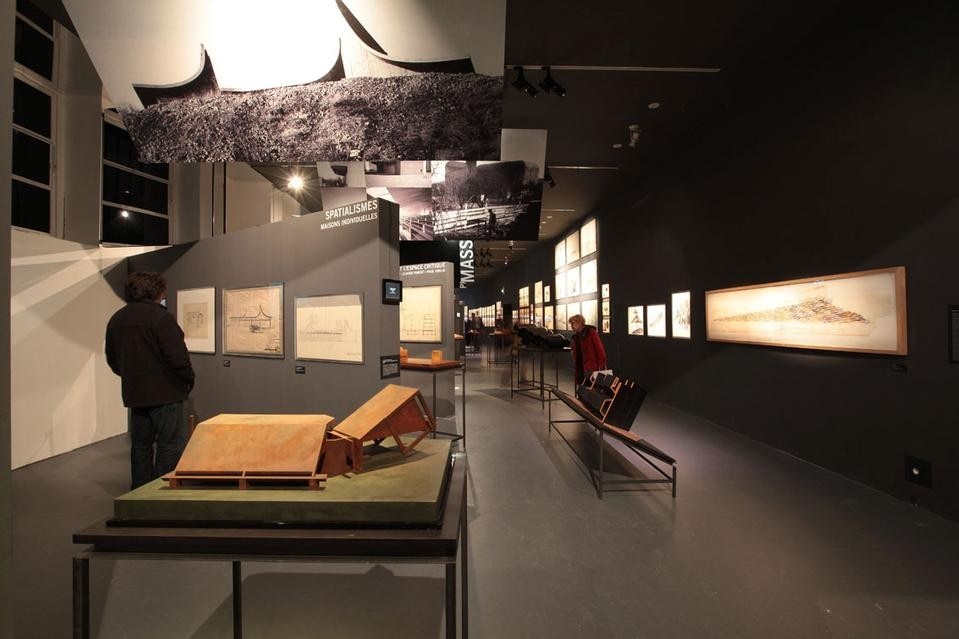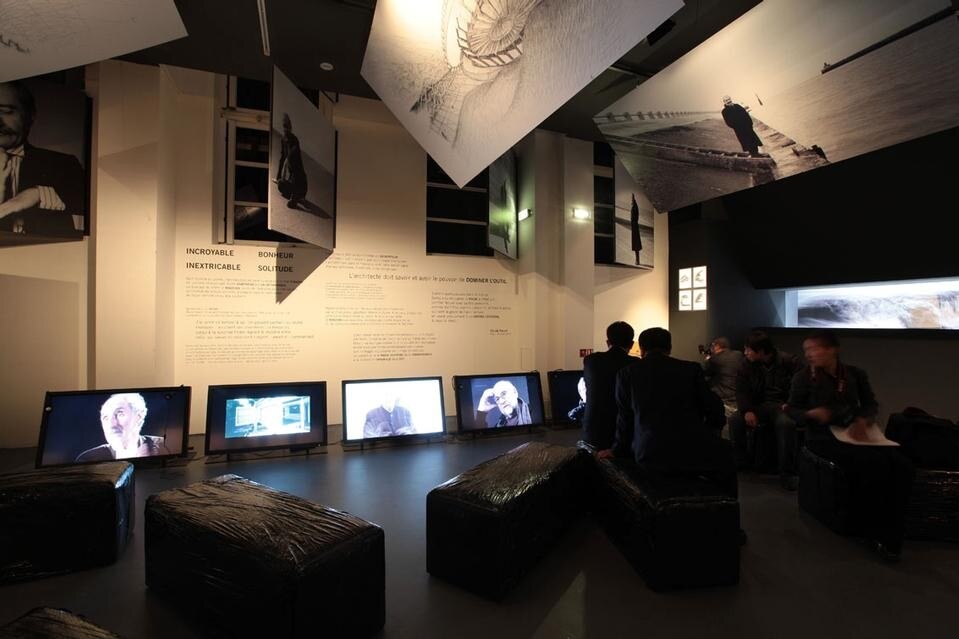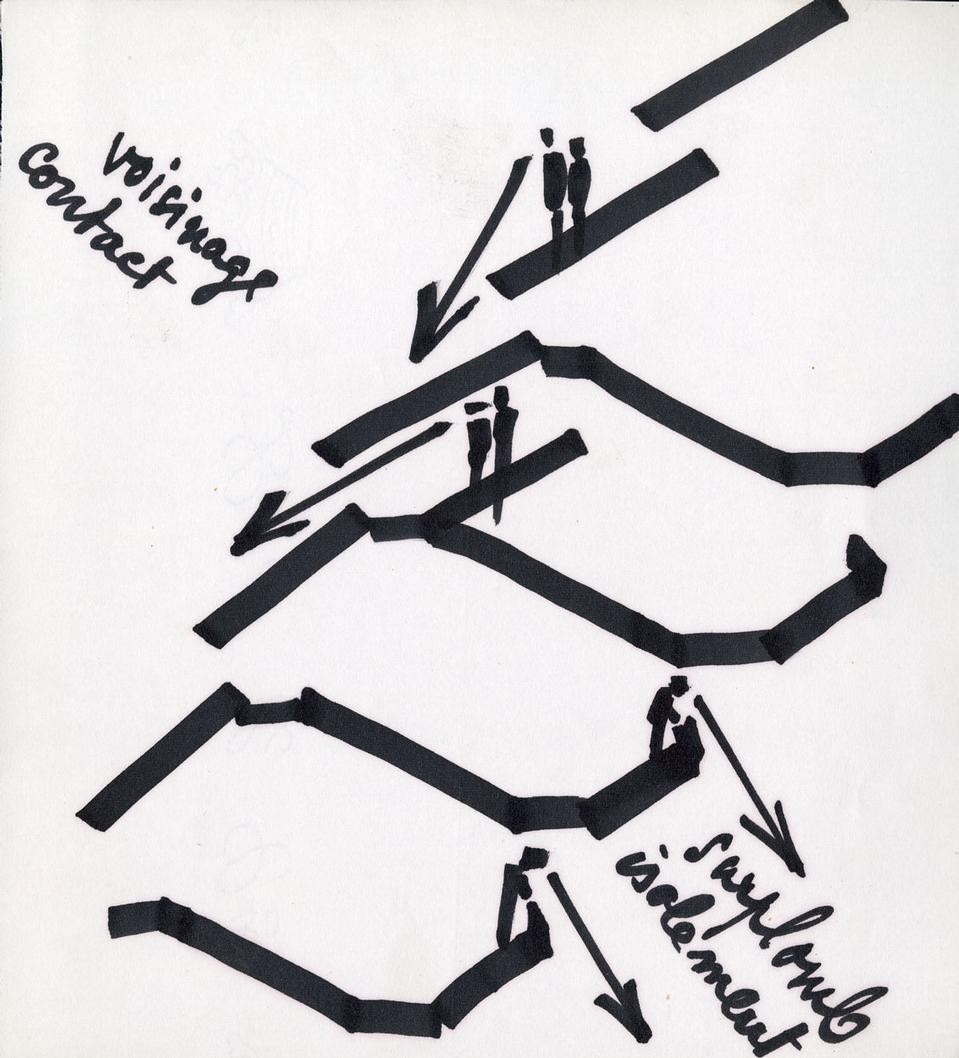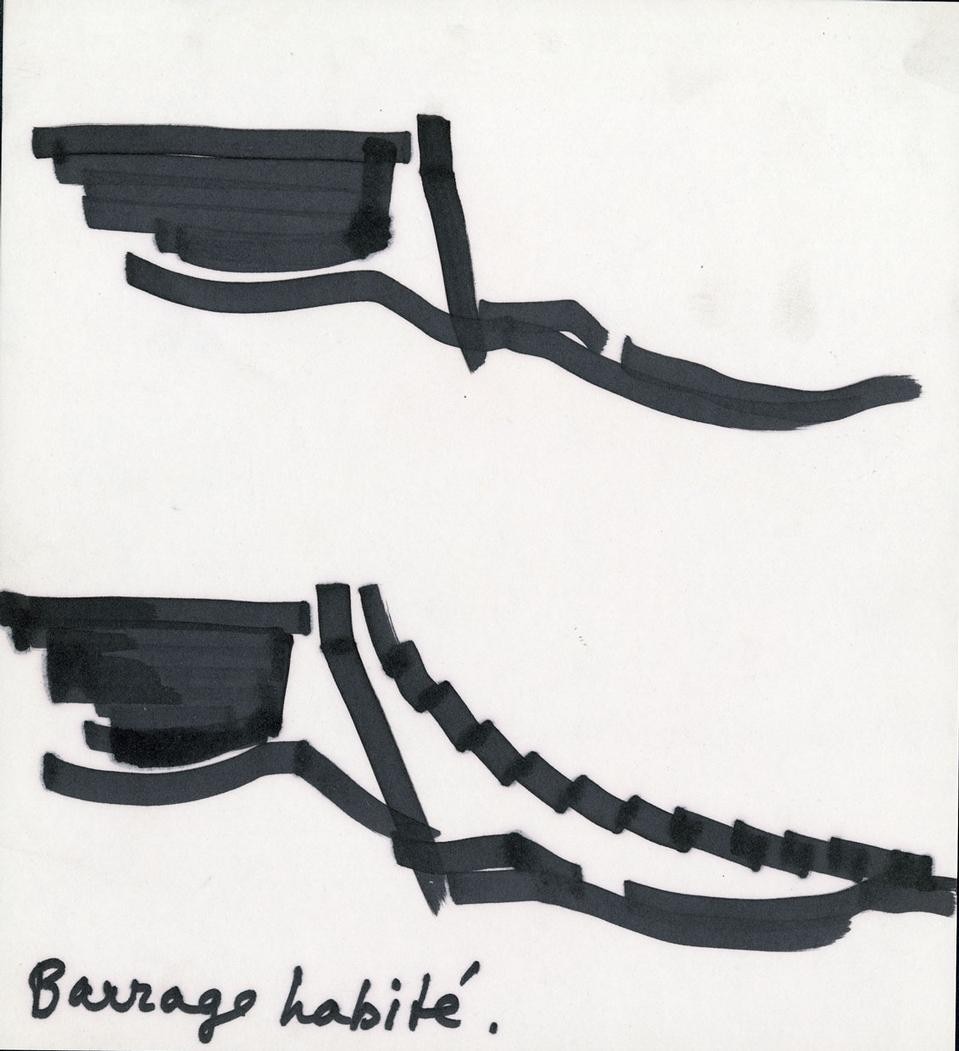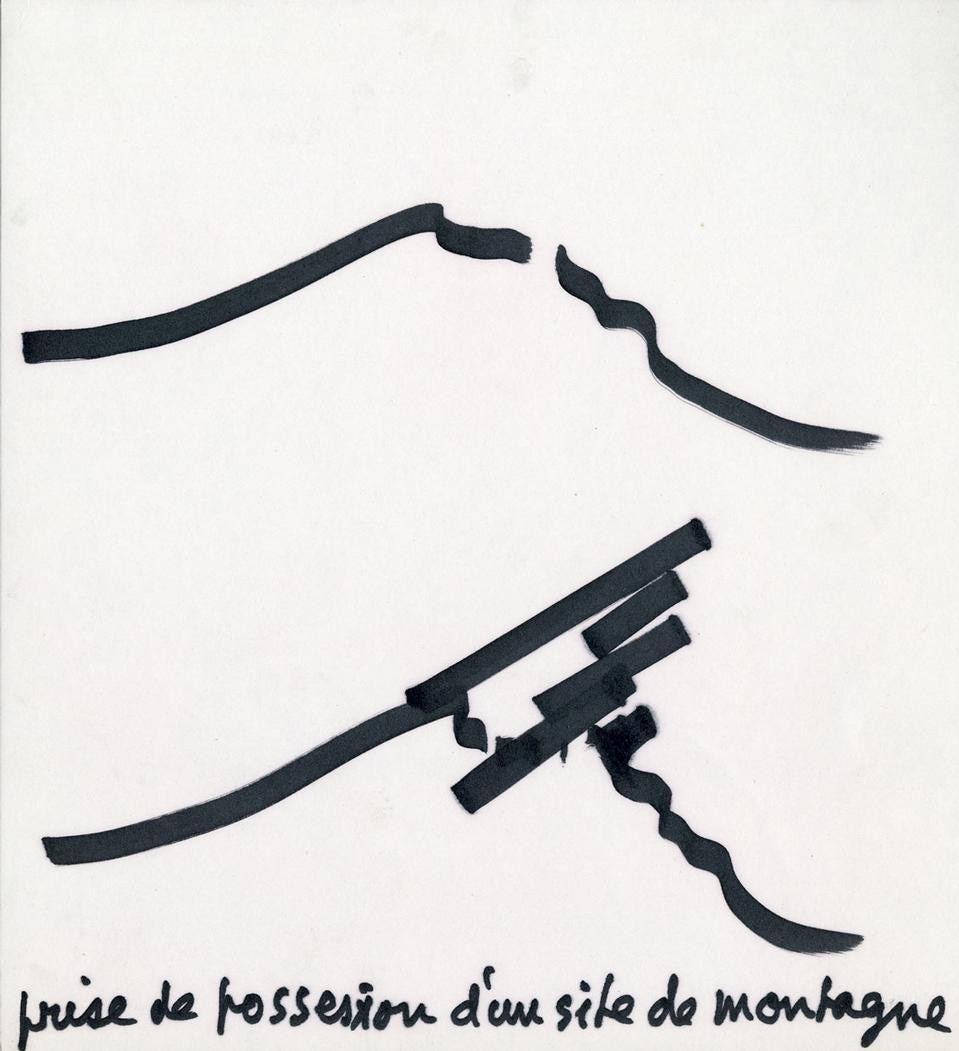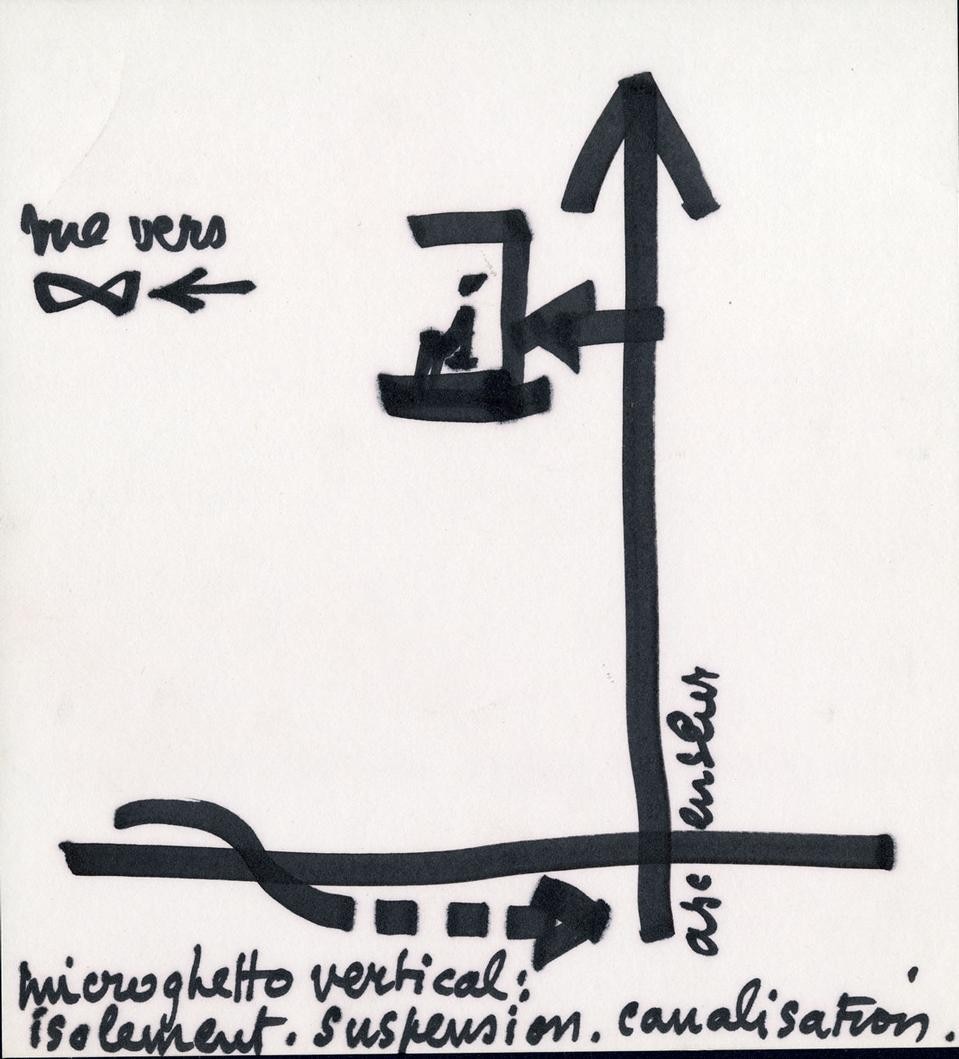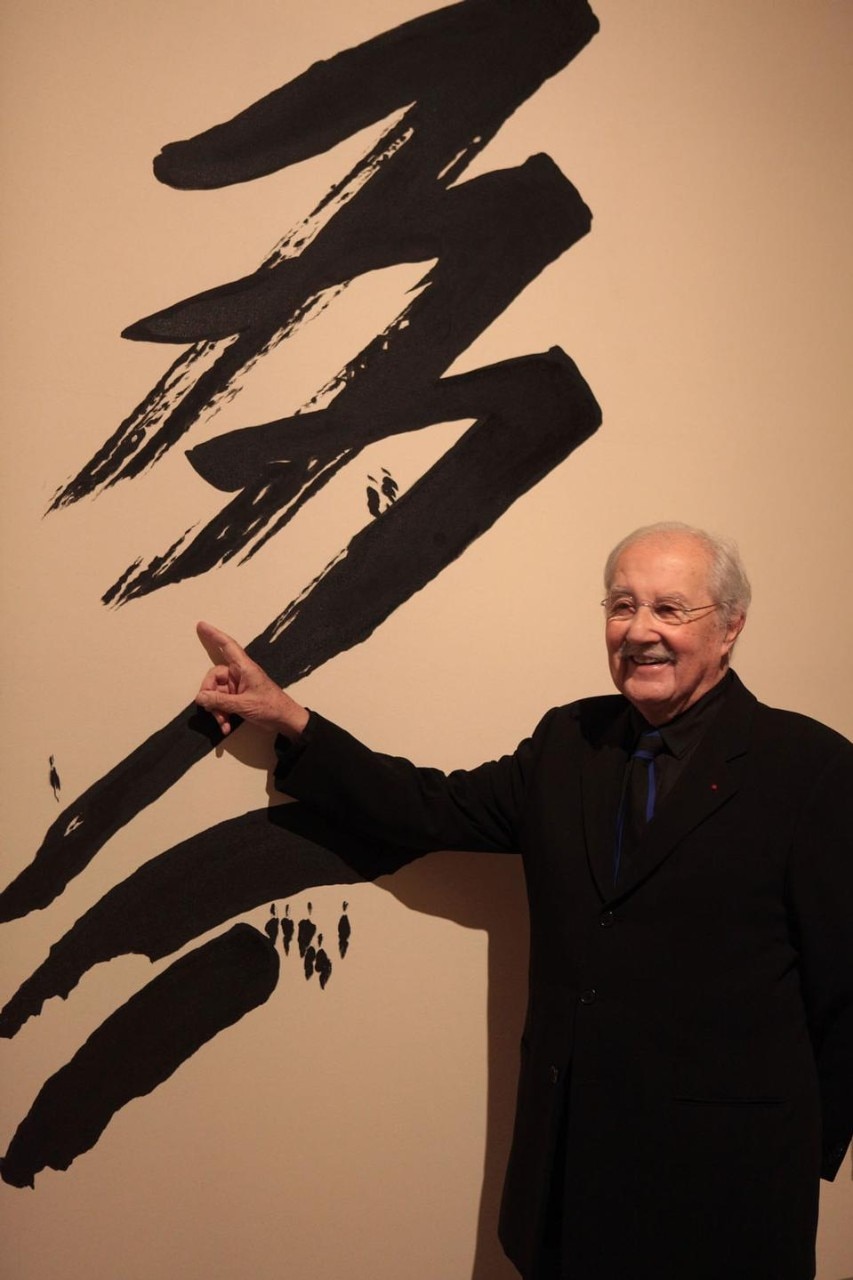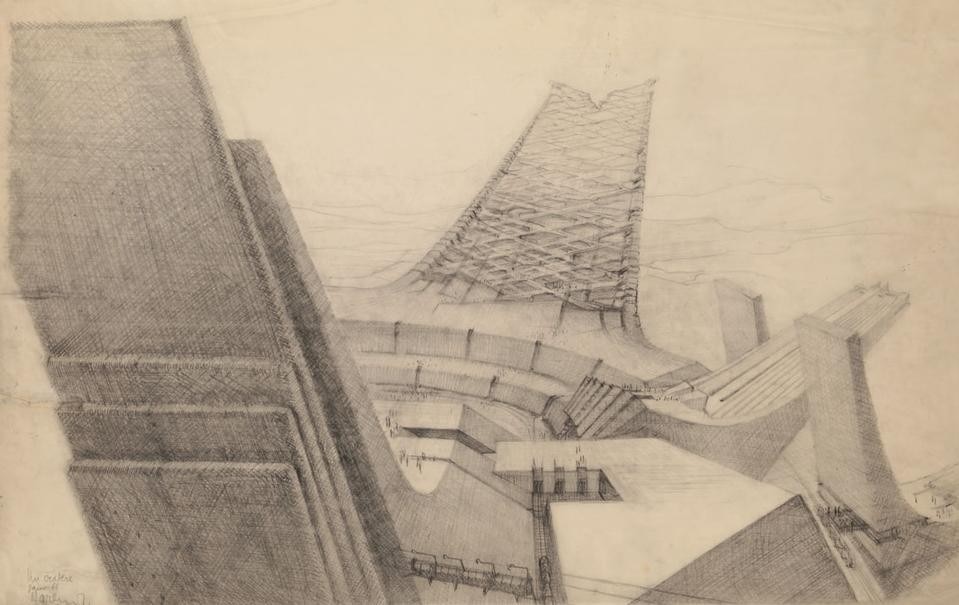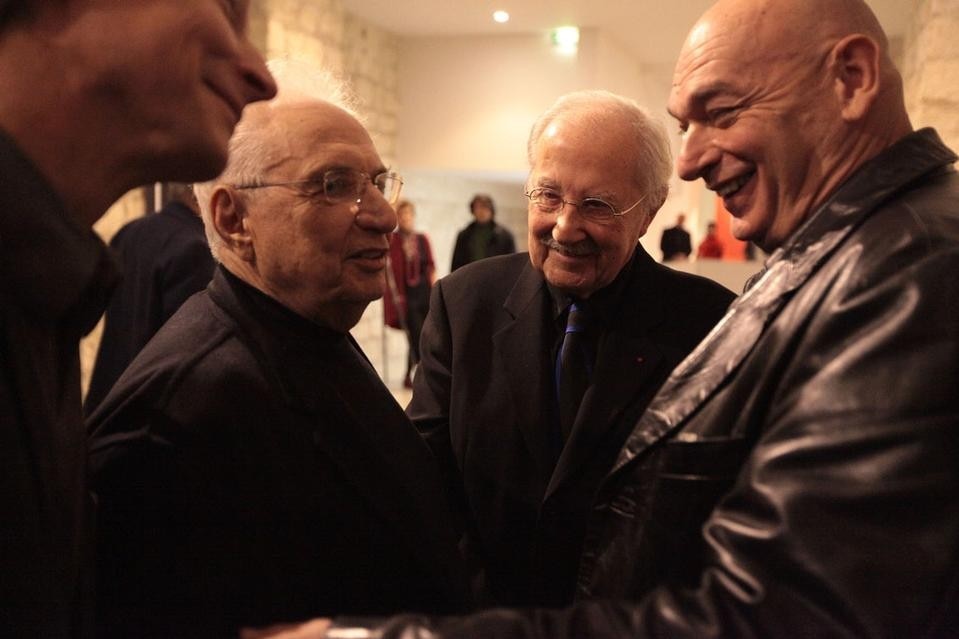CP loves art and artists. He rubs shoulders with them and is influenced by them. He becomes one of them. His life is designed as an artwork. His love of cars explains itself: for him the E-Type Jag or the Maserati Indy are art objects.
Concrete
His revered material. He is constantly on the lookout for ways of expressing it, thinking about falsework and forms, the truth of material, the nobility of bare concrete. CP has always loathed affectations and prettiness… He likes the unpopularity of this material. The bunker invented a powerful concrete aesthetic which he cultivated, anticipating it with André Bloc. For among his adventures with artists, their encounter, as the name suggests, developed into a work on mass and weight. CP "architected" forms devised with Bloc; the beauty of the Maison d'Antibes and the Maison de l'Iran in Paris are proof of the depth of their accord.
Courage, Nuclear power plants
CP is not afraid, he relishes a good challenge. He can put up with unpopularity and even get a certain glory out of it, claiming responsibility for it. He likes being the beacon architect of new atomic power stations, because the unbelievable scale and sheer mass of their architecture have to tame enormous energy and risks.
Drawing, design
CP loves to draw. With pencil, fountain or black felt-tip pen, from the simplest, smallest project or detail, a concrete angle, to his utopian evocations of oblique cities, remote design. When reality gets too tough and thankless, drawing is a deep refuge that regularly brings remarkable evocations to light.
Elegance
Nobody could beat him in a competition for elegance. His Mao-collar Feruch suits, coral or cyclamen shirts, wide ties and fine pochettes, as well as shoes, vintage cars and silver fountain-pens, the curly hair and richly designed sideburns, all are mastered, measured and lit up by big smiles. His passion for the aesthetic is applied to his person.
Family
Michel, his brother, writes and looks after the Burgundy Festival and artistic heritage. Nicole, his sister, dances and… Claude draws. Naad, his wife, encourages the young architects of rue Madeleine Michelis; sobre, silent, mysterious and luminous.
Chloé, his daughter, designs websites, books and posters. And his brother-in-law Patrice Goulet, fascinated by CP, takes up architectural criticism.
Follenfant
Étienne Follenfant is the modelmaker who used lime wood for his mock-ups of houses and hypermarkets, but also of the urban utopias dreamed up by CP and Paul Virilio. The arrival of the latest model was the excitement of the week. Emotion, inspection, enthusiasm.
Frustrations
I have seen CP furious about being denied access to a commission in relation to his ambitions and fame. He had the impression of being forgotten, underemployed, unloved by politicians and economic decisionmakers. Unfortunately it was not an impression: CP has spent his life battling with minor projects, fragments of reality into which he blows particles of utopia.
Gilles Ehrmann
An ascetic who injects CP's architecture into black-and-white photographs.
Humour
CP's view of himself and of architectural circles is a steady source of derision and good humour. His little epistolary sketches are gems. Hypermarkets Starting from a dreary commission generally doomed to end in outer parallelepipeds and multicoloured graphics, CP builds immense rhythms of raw concrete, improbably tilted masses striving for obliquity.
Invention, Coronary thrombosis
CP is permanently battling against projects, whatever their scale, details or materials. He is restless and demanding, often tired and disappointed by a lack of major commissions. CP collapses: a heart attack. So he makes the decision of a lifetime, drawing again more than ever; and all the time inventing, writing, discussing. He abandoned only the mean and nerve-racking battles over vain subjects.
Jeep
In a khaki-coloured vehicle, with the letters AP ("Architecture Principe") inscribed on it in white, he drives around Paris with Paul Virilio, exemplifying the proud stylistic provocations that punctuate his life.
Klein
His meeting with Yves Klein, the memorial design for Nice, and the discovery of burnt wood in a storeroom are as many mysteries which to my mind strengthen the aura created by the friendship between these two free radicals.
Monolith, Mass
Fascinated by the power of scale associated with mass and material, CP bores deep holes in monoliths or breaks them up, as in his impressive project for the French Ministry of Education at the Défense.
Neuilly
In rue Madeleine Michelis, CP's small architectural office has a threemetre front, a windowless drawing atelier with a glazed roof, and his own office in a basement with two holes in the concrete ceiling. On the street next to this "Neuilly" architecture, in stark contrast to luxury and bourgeois standards, CP built his concept of a "Neuilly" building: a six-storey front punctuated by raw concrete cantilevered beams with natural aluminium girders sliding in between!
Oblique, to Dare
From the dynamics and orientation of his designs for houses, and from his discussions with Paul Virilio on the sense of an architecture related to body and mind, sprang theories of interior spaces in continuation, based on sequences of oblique and horizontal planes. The radicalism and expressiveness of these principles scramble all the conventions of orthogonal modernity. For more than 40 years CP has dared to express and explore unknown organisations and rhythms.
Pedagogue, Polemicist
CP has not taught in schools and has never proselytised. He has only drawn, spoken and criticised, and some of us felt that he had taught us a craft. His art of controversy is part of his pedagogy.
Radicalism, Reality
CP has no time for the hybrid, the feeble or the limp, for the simulacrum. he likes to assert forms and reveal rhythms, in concrete, steel, glass. He is not afraid to frighten.
The resulting radical expressions leave their mark on reality, from the small house to the hypermarket, via the nuclear power plant. With no concessions. The timid need not apply.
Schöffer, Schein
CP the young student chose his companions... and one wonders, where does his radicalism come from? And how did he cultivate it?
Social housing
CP always criticised and denounced the conditions of social-housing production in the '60s.
Tension
For CP tension is the hallmark of a project that has been well wrung out, leaving no bluff or hesitation. With him we learn the art of decantation, the search for fruitfulness, the meaning of a line or overhang, the sharpness of expression.
Utopia
The 1960s were eager to invent new towns, new lives… the '60s were bored by old stones and detested dust. Optimism is an instinct, exploration a carefree attitude and utopia an ethic. CP is a man of his time.
Virilio
It was the love of concrete and provocation that first united CP and Paul Virilio. A man of predictions, Virilio goes out looking for them in a spiritual, mystical world, fascinated by war and religion, by the beauty of the art of war and its architectural production. With each other's obsessions and cravings, they invented another world. Their encounter was totally synergic; for them the milieu of the '60s was prolific. And the wake of their common enterprise is impressive. '68 separated CP and Virilio, but they remained marked by each other. The architect went on exploring through drawing, the thinker built no more architecture…
Youth
On account of his impertinent joviality, his pertinent and often cutting pen and forceful style, the virtues of youth have always been attributed to him whatever his age.
Jean Nouvel
